If you’re new to cake decorating, you may be asking if you should refrigerate a cake before icing it. Here I’ve put together my best advice on when and when not to chill cakes in the decorating process.
Over the years, I found what works and what doesn’t work for me and I’m happy to share my tips and hopefully they can make the whole cake making and decorating process run more smoothly for you.
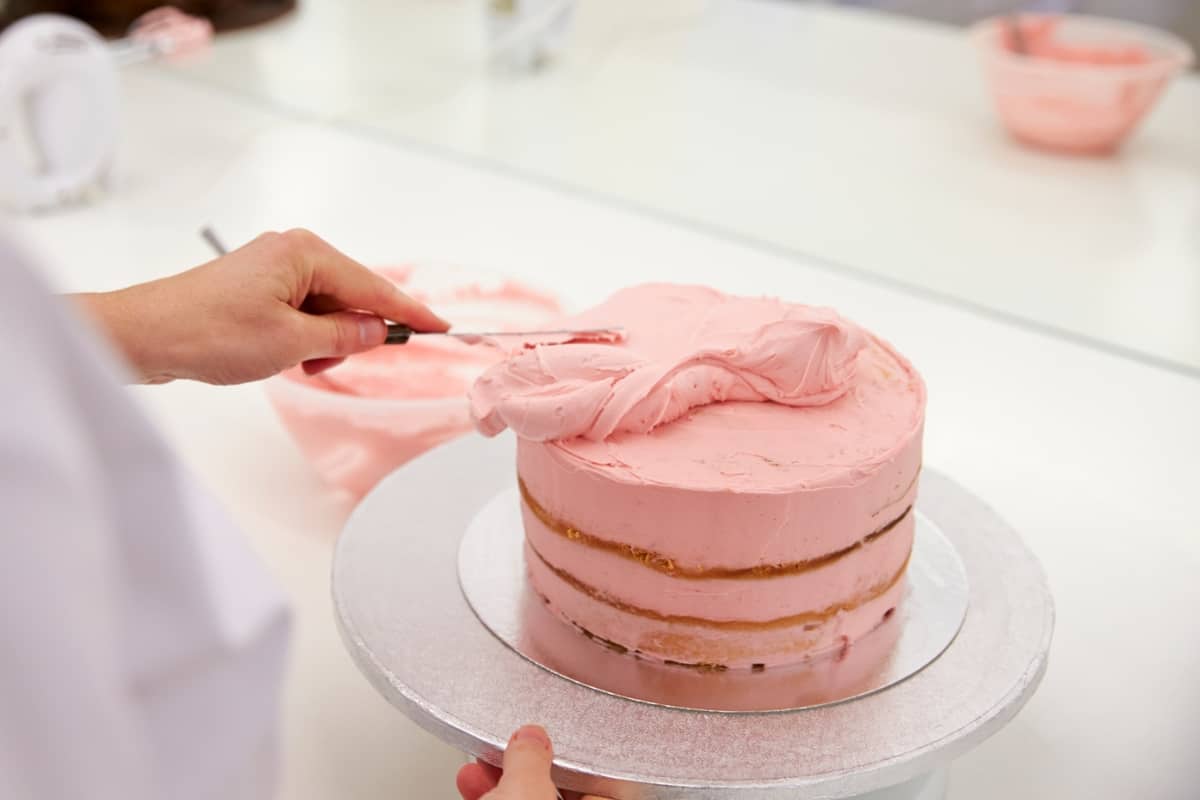
Jump to:
- Should I put my cake in the fridge before icing it?
- My philosophy on chilling cakes:
- What are buttercream bulges and blowouts and why do they happen?
- What do icing bulges and blowouts have to do with chilling cakes before icing them?
- My method and what has worked for me:
- So when should I chill my cakes in the decorating or icing process?
- Final thoughts on chilling cakes:
- Breaking the rules:
- The Cake Blueprint:
- Other posts you might like:
As an Amazon Associate, I earn from qualifying purchases.
This post has multiple parts to it that build on each other. It’s best to read the entire thing if you really want to know the thought process behind it, so you can determine what the best cake decorating method is for you.
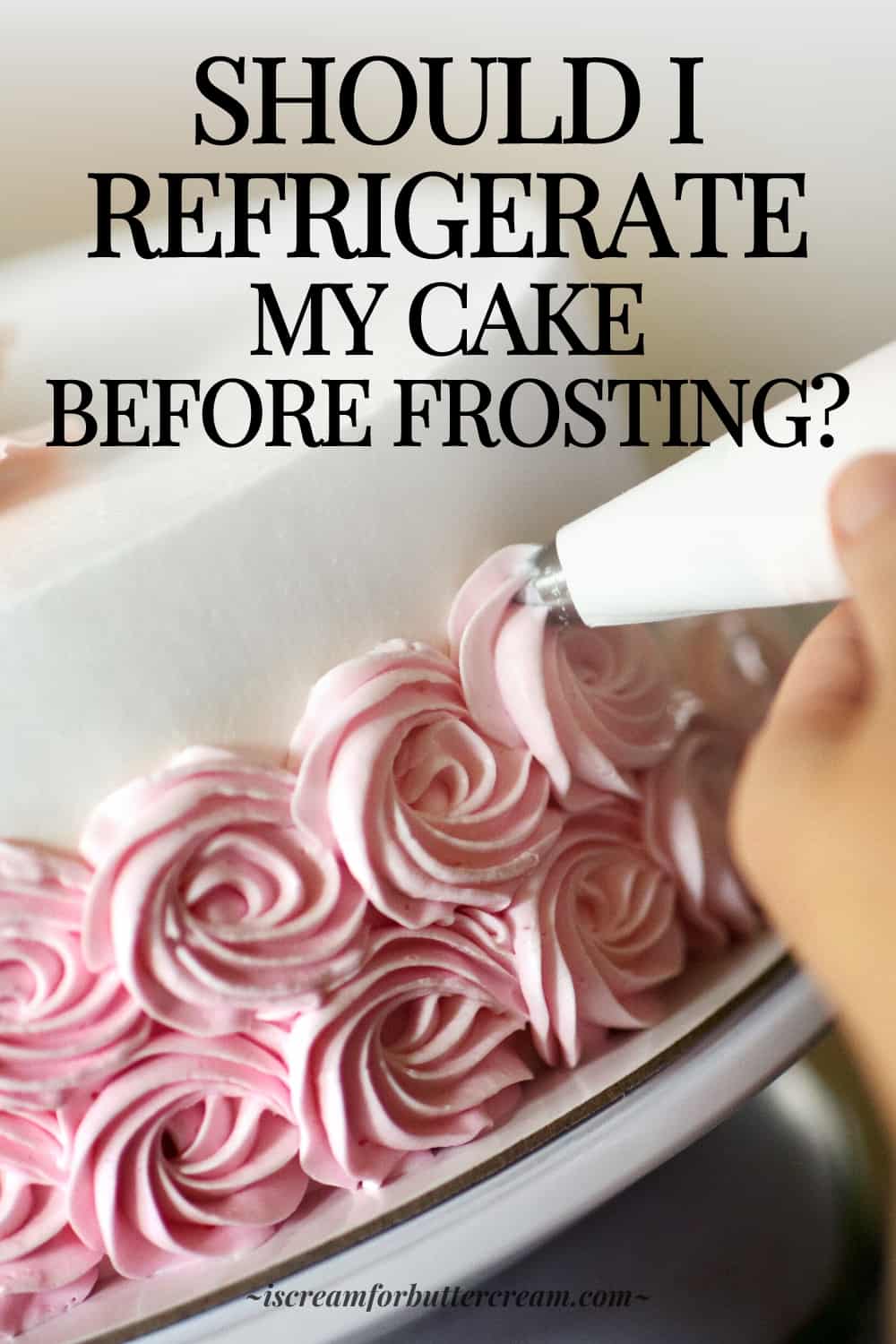
Should I put my cake in the fridge before icing it?
In my opinion, the short answer is no, not unless it contains perishable filling. There are specific reasons why and other factors that go into it and I’m breaking those down below, so you know when to chill it and when it’s helpful not to.
My philosophy on chilling cakes:
This post is slightly controversial….well it’s controversial in the cake decorating world.
In this post, I’m going to tell you why I don’t generally chill my cakes before frosting and decorating them…usually. Now, I say ‘usually’ because there are actually times when I do chill them, but that’s usually the exception.
I know that a lot of cake decorators like to chill their cakes during the decorating process and I know that many will not agree with me and that’s okay.
What I WILL say is that if you’re having trouble with icing ridges, buttercream bulging, or you decorate your cake and come back later to a disaster, then you might want to try a different method.
I have learned that some cake decorators are very, shall we say, defensive about their methods. I also want to say that I’m not saying anyone is doing it the wrong way. I’m just simply talking about what works for me after much experimentation.
Now, before anyone sends me any hate mail over this, please read to the end. (There are times I actually chill my cakes…not often, but there are instances where I do and I go further into detail about my method below.)
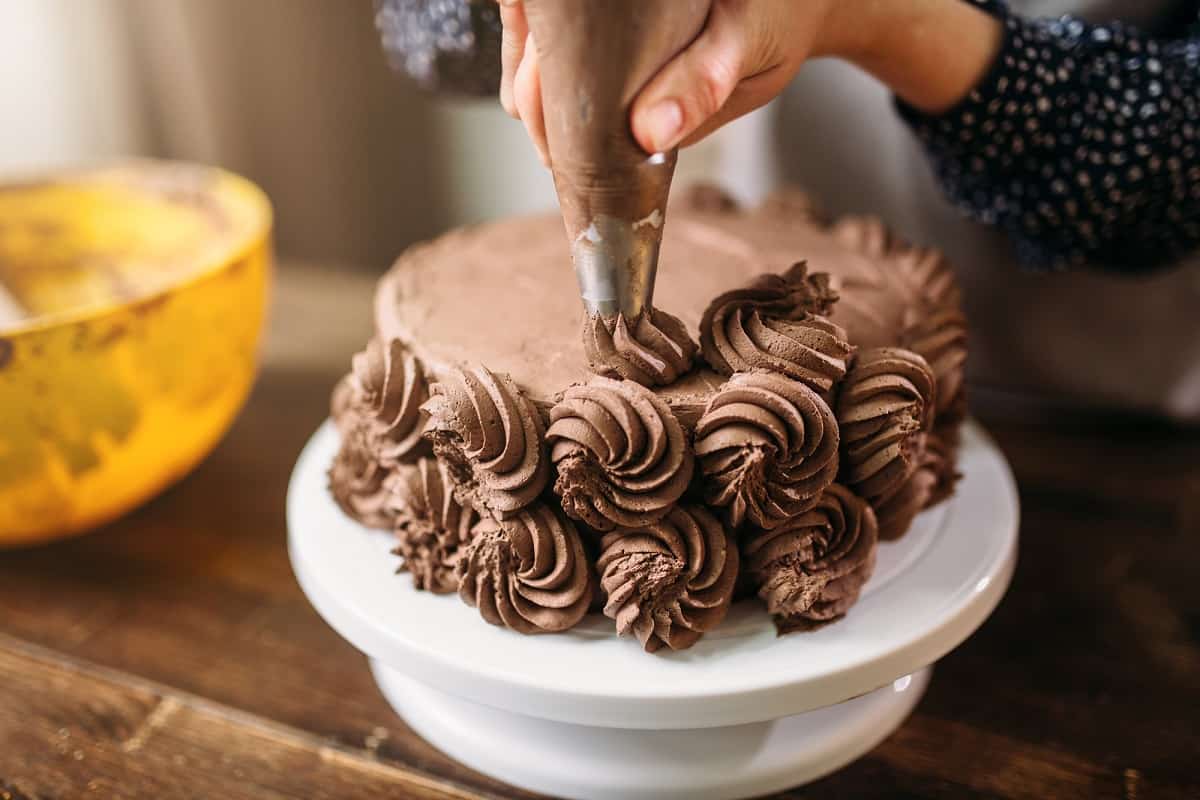
We all have methods that work best for each of us, so my advice is to try out different ones and see what works best for you. You may love chilling cakes while decorating and if it works for you, then that’s great.
Some decorators even like to decorate their cakes, not only chilled but partially frozen. I will tell you that I have ALWAYS had trouble decorating them cold. Why? Because they look perfect once iced, but when they come to room temperature to serve, buttercream bulges and icing ridges appear.
I have a couple of theories about why I think that happens that I’d like to share with you.
What are buttercream bulges and blowouts and why do they happen?
1. Buttercream Bulges
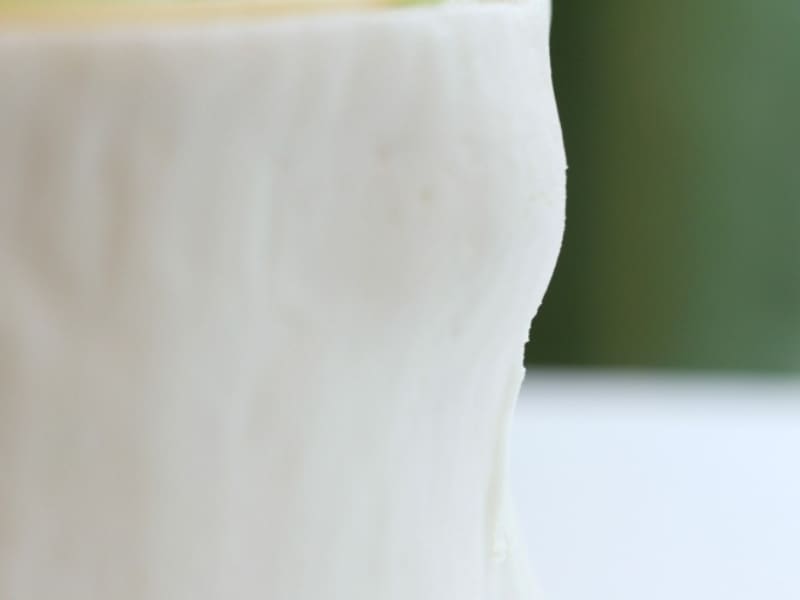
Buttercream buldges and blowouts are basically air pockets that push the buttercream out and away from the cake.
I think they happen because of the moisture between the cake and the buttercream.
See, when you chill cakes and then ice them, there’s condensation on the cake. That’s moisture between the cake and the icing.
Once the cake comes to room temperature, it’s like that moisture just pushes the buttercream away from the cake. I have no scientific proof of this, but when I keep my cake layers at room temperature and decorate them that way, it doesn’t seem to happen.
2. Icing Ridges
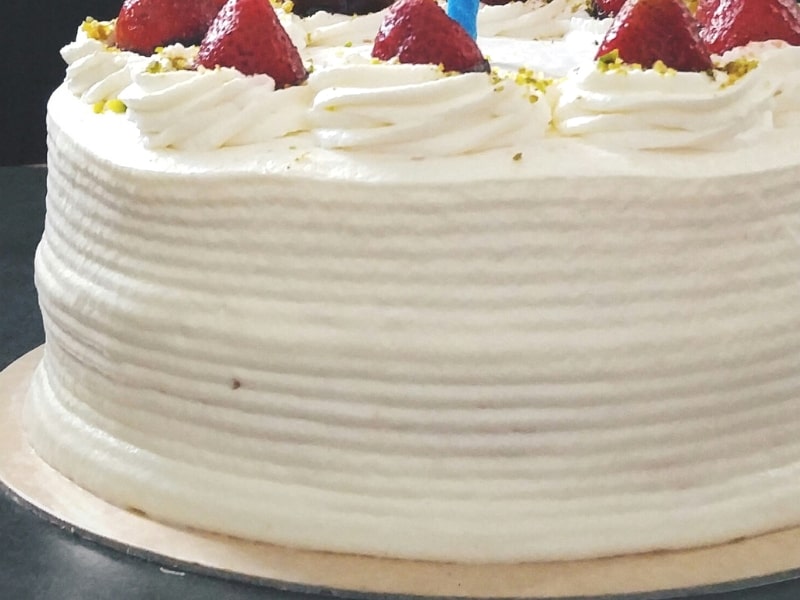
Icing ridges happen because the cake layers settle and push out the filling a bit. Even if you don’t overfill your cakes, it can still happen.
I know you’ve probably heard of the icing dam. It’s a ring of buttercream that you pipe along the perimeter of your cake layer and then fill in with buttercream. It’s supposed to keep the filling from squishing out.
Am I the only one that this doesn’t always work for? I’ve even heard of people thickening the icing they use for the dam, but I still have issues with ridges that way.
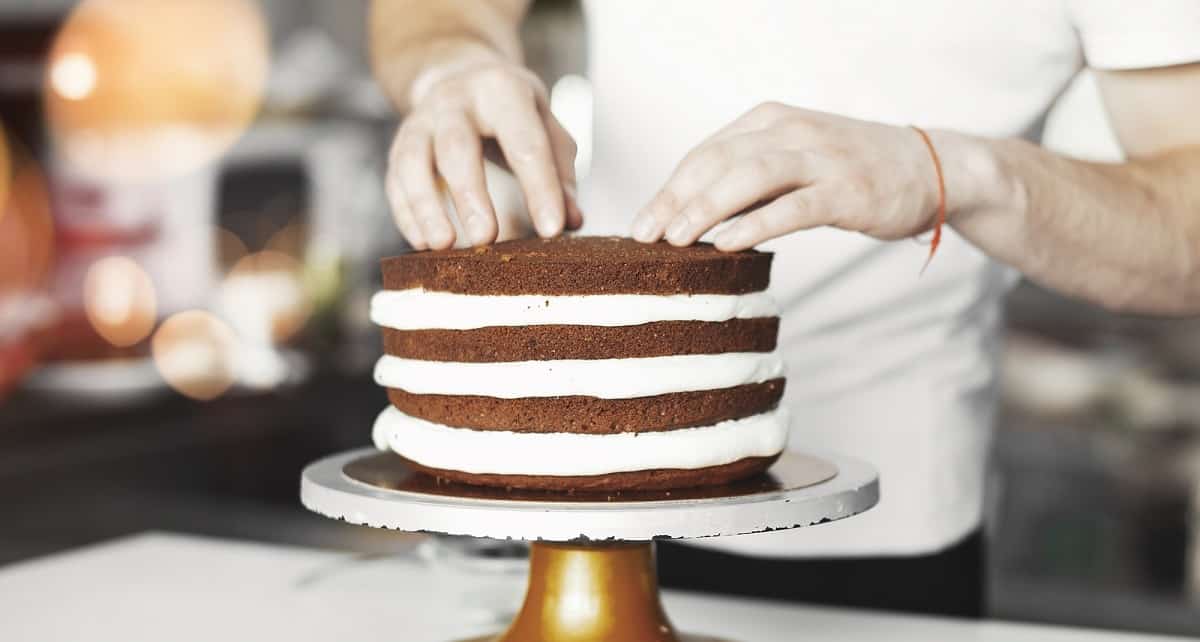
I mean the icing dam is great and really a must if you’re filling your cakes with fruit or curd filling, but if you’re just filling it with buttercream, I don’t even bother with it.
My point is, that the fix for icing ridges is that your cake needs to have time to settle. Those layers need to be allowed to settle and it’s just gonna push out a bit of buttercream or filling.
It needs to settle at room temperature. If it’s cold, it’ll just firm up and then settle later when it comes to room temperature.
Maybe you’re a cake wizard and this doesn’t happen to you, but in my experience, it really does help to let the cake settle out of the fridge before your last covering of buttercream and decorating.

Don’t get me wrong, if your icing is too soft, you’ll have problems all day long. If you over-fill between the cake layers, you’ll have problems as well, but if you know you’ve got a good consistency buttercream, then try just filling the cake and letting it have time to settle before covering the outside of it. (More on my method in just a bit.)
What do icing bulges and blowouts have to do with chilling cakes before icing them?
So what does this have to do with chilling cakes? Well here’s the deal: Once you fill and stack your cake layers, that’s when it needs to settle.
Those cake layers need to settle and if any filling is going to squish out, it needs to happen before you put the final coat of icing on the cake. That way, you get a change to scrape off any excess that squished out.
If you chill the cake at this point, the whole cake and filling will firm up and it won’t give it a chance to settle.
Now, if you’re using a perishable filling, or Swiss meringue buttercream, you’ll obviously have to chill it. (I will say that some say it’s okay to leave out Swiss meringue for a couple days, but I have always been a little leery about that, so I just refrigerate that kind of buttercream.) Anyway, if you’re using American buttercream, it doesn’t generally need to be chilled.
My method and what has worked for me:
So here’s what I do: Once I fill and stack my cake layers (not tiers-tiers are made up of layers, so we’re only talking about layers here), I just cover the cake with a very thin layer of buttercream. (Not even thick enough to be a crumb coat really.)
I do this so the cake doesn’t dry out. I then cover it with plastic wrap and put it into a box.
I then just leave it covered and in the box at room temperature to settle for several hours or overnight depending on when I need it. I don’t chill it at this point.
Remember, I don’t want it all to firm up…I want it to settle and go ahead and do whatever it’s going to do now as opposed to after I’ve decorated it and then it comes to room temperature.
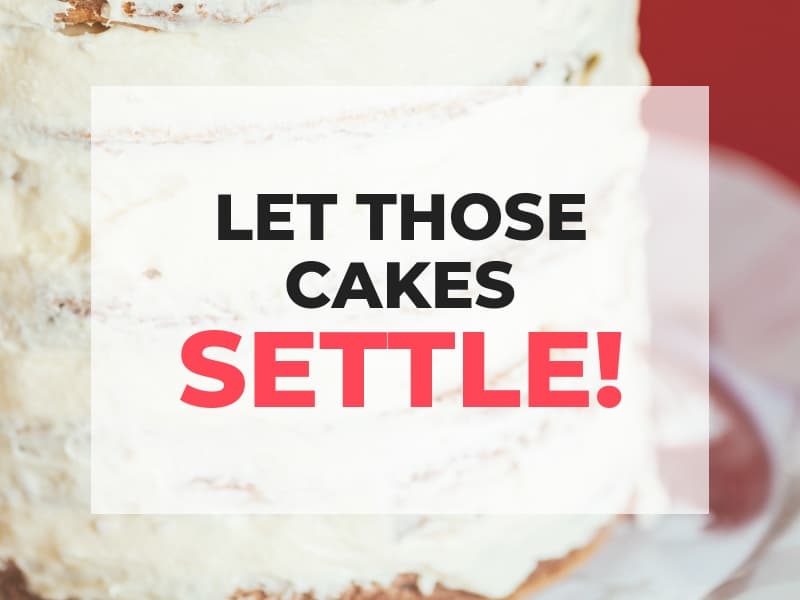
Once it’s settled, I take an icing spatula and smooth out the ridges where the buttercream may have bulged out a bit between the layers.
Any buttercream that has pushed out, I just smooth it off, then I add my final coat of buttercream or ganache. You could cover it in fondant at that point if you wanted to.
Icing at room temperature also means that there’s no condensation on the cake when I go to ice it so there’s WAY less of a chance that there will be icing bulges and blowouts later on.
So when should I chill my cakes in the decorating or icing process?
After it’s been iced:
So, should I put my cake in the fridge after icing it? Well once you’ve completely iced the cake, it can actually be chilled or stored in the refrigerator, or just at room temperature if you like as long as there isn’t anything perishable on the cake.
The reason it can be chilled now, after it’s been covered in frosting, is because everything has settled and you iced the cake when it was at room temperature, so no condensation formed between the cake and the frosting.
If it has anything perishable on it:
Chill any cake if they’ve got perishable filling or frosting, because well, nobody wants to be sick.
If you need to add fondant and need the buttercream to be firm:
I will also oip my cake into the fridge for only about 15 minutes before I add fondant.
When you’re adding a drip to the top:
If your cake will have a drip effect on top, you’ll need to chill it after you’ve frosted it, so it’s firm and cold before you add a warm chocolate or ganache drip to it.
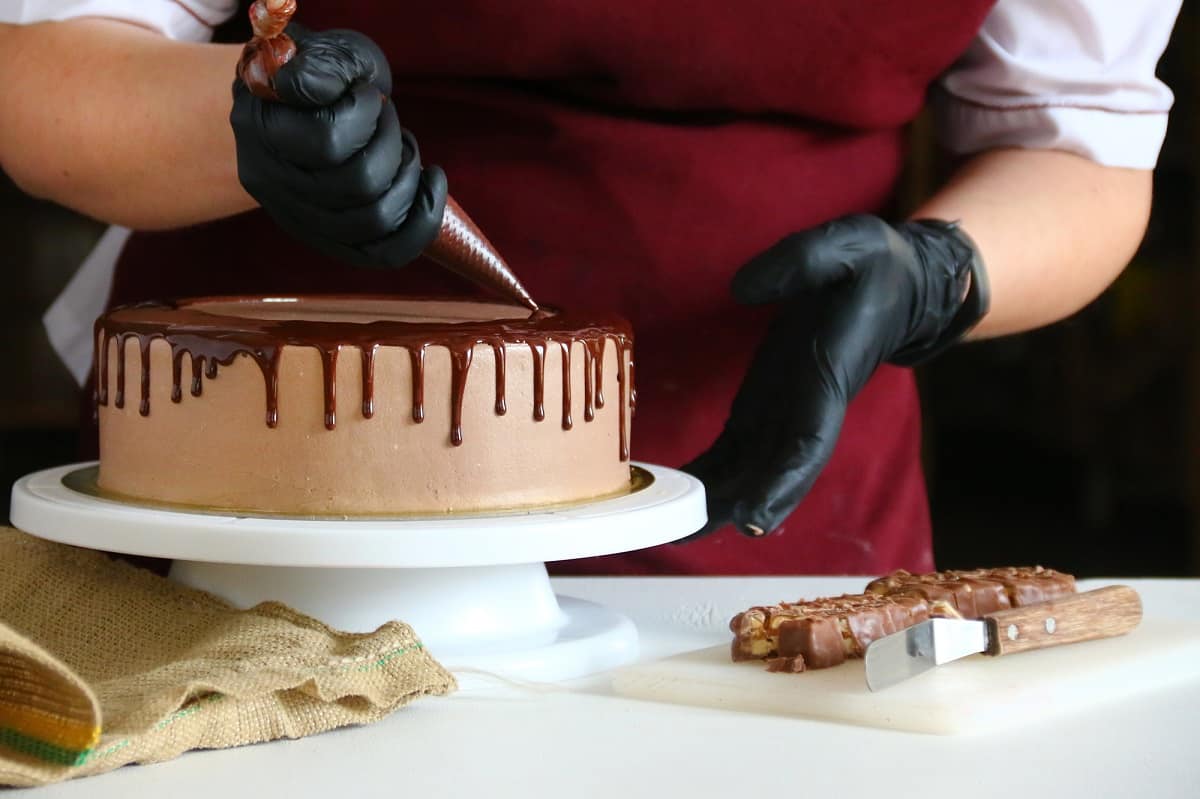
Before you transport a cake:
It’s also helpful to chill cakes for about 20 minutes or so before transporting them. It helps to make the cake more stable for transport.
If you want more tips on how to transport cakes, make sure to check out this post here: How to Transport Cakes
Final thoughts on chilling cakes:
So, I’ll say again that I know many people who chill their cakes, who don’t agree with me and I’m totally okay with that. We all need to do what works best for each of us and this is my method that has worked for me. If you’re having trouble with your cakes, you might just try it and see if it works for you.
One caveat though. If you live in a warm climate and you don’t have air conditioning, then this method probably won’t work for you, but if you’ve got AC and a bug-free zone, cover those cakes, box them up and set them on your counter or table, let them settle and then decorate. Let me know how it goes, ok?
Now, you’ll want to test this out on a cake before you implement this on some big cake order. It’s always good to do test cakes when you’re trying a new method.
Breaking the rules:
Remember, never say never because there will always be a time that you have to break the rules. There ARE times when I have to chill the cake. I may have a perishable filling or icing.
I may need to do a drip cake in which case the buttercream has to be chilled, so it doesn’t get destroyed by the warm chocolate ganache.
So, this method of mine isn’t written in stone. The best thing to do is use your own judgment.
My default is to NOT chill them, but if an issue comes up and it’s necessary, I just roll with it. And basically, that’s what cake decorators do, right? We just roll with it, because sometimes your cake just has a mind of its own.
The Cake Blueprint:
If you need a tried and true, step-by-step method on how to decorate layer cakes (getting smooth straight sides with no icing bubbles, bulges, or ridge lines), then I’ve got you covered in The Cake Blueprint.
The Cake Blueprint includes a step-by-step video that shows my method and that will help you decorate layer cakes and keep those cakes from getting icing blowouts and icing ridgelines. You’ll also get guides, tips and printables!
Other posts you might like:
- How to Get Smooth Buttercream
- Anatomy of a Decorated Cake
- Common Cake Decorating Problems and How to Avoid Them
- How Long Does a Cake Last in the Fridge?
- How to Store a Cake
- How Far in Advance Can I Bake a Cake?
Don’t Forget to Pin it Below!
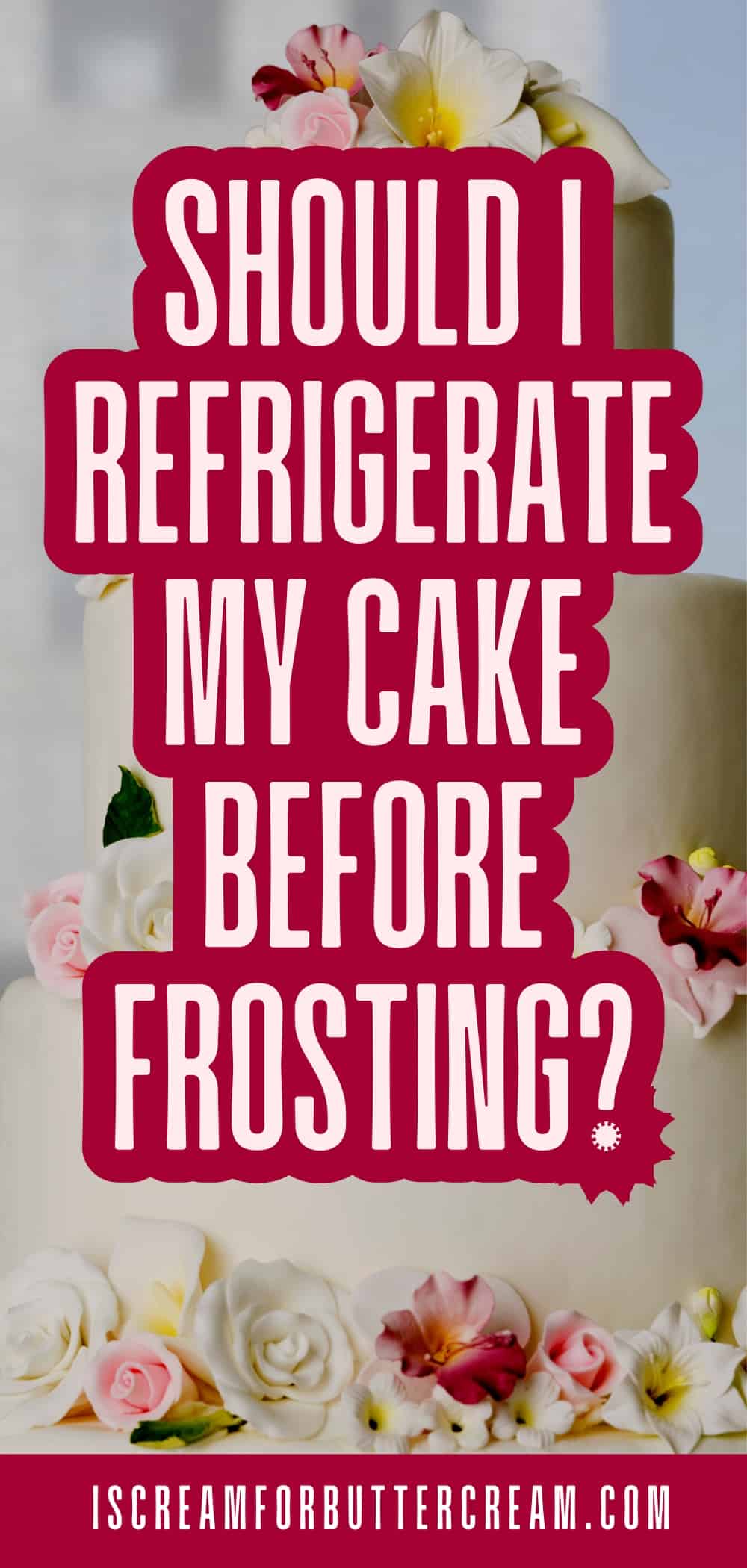


Wally Rodriguez
If you don’t chill your cakes, how long before do you decorate your cakes?
Thank you.
Kara Jane
I will chill them if they have perishable fillings or frostings, but other than that, I tend to let them sit at room temp. The length of time to decorate just depends on the design of the cake and how complicated it is. My general rule of thumb is to serve the cake within three days of baking it. It will stay fresh longer than that of course, but that is the latest I want to start serving it or give to the client. The time to decorate depends on the design of the cake, you may need a couple days to decorate it, or maybe just one day. I have a post where I answer that question and others that are similar that might be helpful. Here’s the link to that: https://iscreamforbuttercream.com/how-far-in-advance-can-i-bake-a-cake/
Tracie
So I will more then likely have the ridges since Im using Swiss meringue?
Kara Jane
Tracie, not necessarily. Some people don’t have a problem at all. I think it depends on a number of factors including how heavy your cake layers are and how thick the filling is and how long it’s been out of the fridge. It’s generally when the cake comes to room temperature and settles a bit…that’s when you sometimes get the buldges or ridges. Like I said, you may not end up with any ridges as some people seem to not have any trouble with them at all, but I’ve never been one of those people. I also live in a warmer climate though and that plays a part in it as well. I think swiss meringue is okay to be room temperature for a certain amount of time though and you could fill your cake and let it settle for an hour or two and then chill it. That might help keep ridges from happening. It’s okay to chill it after you’ve added the icing and it’s settled. I mean there is a chance that condensation could form between the cake and the icing that causes an icing blowout, (which is why I don’t usually chill when I use American buttercream), but that’s a chance you just have to take with perishable icing. Swiss meringue is really good though and worth it. 😉 I hope this helps!
Hannah Jalloh
So splendid Jane I am a beginner I am impressed by your advice I will do as you have said thanks.
Kara
Wonderful Hannah, I hope it helps!
Esther
Thank you Kara Jane , I’m a beginner for baking cakes .
And I’m not well trained in frostings my cakes so I used to put them in the fridge to be firm. After I read your tips I tried not to put in the fridge for long time. Thank you ?♥️♥️♥️
Kara Jane
Glad it helped! Just know that you can always make adjustments if that doesn’t work out for you. Do what’s best for you. 🙂
Sharon Enehizena
Hello Jane
Thanks for taking so much time to explain this,can I put decorated fondant cake in the fridge?.now is summer and I don’t have AC.please help.
Thanks.
Kara Jane
I usually don’t, but I know a lot of people who do! If you decide to try that, just make sure not to touch the fondant when you bring it out of the fridge. Condensation will form and you don’t want to touch it during that phase.
Linda Wascom
So this question may sound crazy. I saw where you said to let the top of the cake form its crust layer before smoothing the cake with a Viva papertowel. But on the sides, for a naked edge, I assume I would smooth/remove the frosting as applied to get that edge. Then let it sit to form its “crust layer”. ???
Thanks so so much!!!
Kara
Linda, for a naked cake, I would add a super thin layer of buttercream around the cake and let it settle. After it’s settled, go around and smooth out any ridges that formed after it settled. Next, add more buttercream, then just use the scraper to scrape off until you get the desired look. There’s no need to use the paper towel method for a naked cake as it’s supposed to have that scraped-off rustic look.
Amy
I am using cream cheese frosting (but a more stable one), should I refrigerate that before decorating? I have read Cream Cheese Frosting is considered perishable.
Kara
Hi Amy! Yes if the frosting has cream cheese in it, it would be considered perishable and would need to be stored in the fridge.